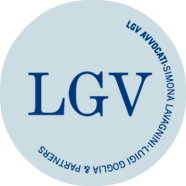THE “BETTY BOOP” JUDGEMENT OBTAINED BY LGV IS SUPPORTED BY LEGAL COMMENTS
30/08/2016
On the third volume of the Italian legal periodical “Rivista di diritto industriale”, the first comment on the historic judgement held by the Court of Bari on February 22, 2016 (whereof it has already given notice on LGV’s website – https://www.lgvavvocati.it/en/news/page/3/) appeared. The comment supports the position taken by LGV in the proceedings, and essentially embraced by the Court, according to which the attempt to perpetuate the monopoly on the character of Betty Boop through the trademark protection must be rejected when the copyright on that character has expired (Court of Bari, February 22, 2016, in “Rivista di diritto industriale”, p. 293, with comment of Bixio, “Long live Betty Boop, the extra-protection of the fictional character”).

In a previous news of our website we talked about the historic decision of the Court of Bari in the “Betty Boop” case, where LGV defended the US company Avela, active in the field of posters and merchandising of fictional characters, supporting the thesis according to which – once a fictional character enters the public domain – a trademark covering the same character could not prevent the use of the character in other graphic representations, not having trademark function. The Journal of Industrial Law recently published a case note to the decision of the Court of Bari, which supports the correctness of the judgement in question, expressly affirming that “the line held by the Court of Bari it is more than appreciated where it wants to ward off the attempt to create upon the famous character of Betty Boop a revival of broader and longer-lasting rights than copyright’s ones”. The comment also points out – correctly – that an attempt of this kind is increasingly common, even in terms of prolongation of the duration of the protection and/or extension of the right’s object. Instead, it clearly arises from the comment on the decision of the Court of Bari, as well as from the previous case-law regarding the fictional character, the need to avoid any deceptive use of industrial and intellectual property tools (in this case the trademark), in a pro-competition perspective which is typical of the field of industrial and intellectual property. In fact, it should not be forgotten that such monopolies are born and live in accordance with their pro-competition effects, and more generally for the creation of values for a company as a whole: as a consequence, any use of the tools of industrial and intellectual property aiming – “extra legem” – at an undue extension of the protection shall be avoided (and considered out of the system), in order to prevent such an use from turning into an ultra-monopolistic defense in favor of people – already holders of an economically dominant position – who can perpetuate this position only by virtue of the economic investments that they are able to make, without having to actually perform any creative or innovative activity. The system of intellectual and industrial property, instead, never protects the investment “per se”, but only if it is aimed at creating a value (differently qualified by law as creative, original, distinctive, etc.). This is the strength and the function of the institutes analyzed herein, which must be defended by the operators, in order to avoid a drift of the institutes that could lead to their delegitimization and therefore – ultimately – to a boomerang effect for all the owners of rights of this kind.
